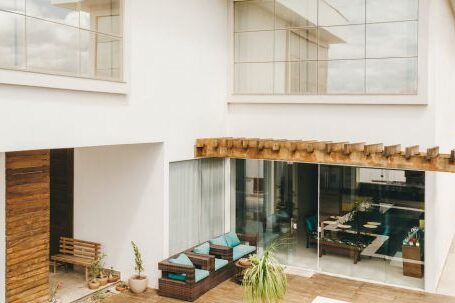Architecture is more than just buildings and structures; it has a profound impact on our daily lives. From the moment we wake up in the morning to the time we go to bed at night, architecture shapes our experiences, influences our behavior, and affects our well-being. In this article, we will explore the various ways in which architecture impacts our lives.
Creating a Sense of Place
Architecture plays a crucial role in creating a sense of place. The design and layout of buildings and public spaces have the power to evoke emotions and shape our perception of a particular location. Whether it’s a bustling city street or a serene park, architecture helps define the character and identity of a place. The combination of architectural elements such as scale, materials, and colors can create a unique atmosphere that resonates with the people who inhabit or visit the area.
Promoting Social Interaction
Well-designed architecture can foster social interaction and community engagement. Public spaces, such as parks, plazas, and libraries, serve as gathering places where people can come together, interact, and form connections. The layout and design of these spaces can encourage socializing, collaboration, and a sense of belonging. For example, seating arrangements that encourage face-to-face conversation or the inclusion of community artwork can facilitate meaningful interactions between individuals.
Enhancing Productivity and Efficiency
Architecture has a significant impact on our productivity and efficiency. The design of workspaces, whether it be an office building or a factory, can greatly influence the way we work. Natural lighting, ergonomic furniture, and well-planned layouts can contribute to a comfortable and conducive working environment. Additionally, incorporating green spaces and providing access to nature within the workspace has been shown to boost productivity and overall well-being.
Affecting Mental and Physical Health
The architecture of our surroundings can have a profound effect on our mental and physical health. Studies have consistently shown that exposure to natural elements, such as sunlight and green spaces, can improve mood, reduce stress, and enhance cognitive function. On the other hand, poorly designed buildings with inadequate lighting and ventilation can lead to feelings of discomfort, anxiety, and even physical ailments. Architects have the responsibility to create spaces that promote the well-being of their occupants.
Sustainability and Environmental Impact
In an era of increasing environmental awareness, architecture plays a crucial role in promoting sustainability and reducing our carbon footprint. Sustainable design principles, such as energy-efficient buildings, the use of eco-friendly materials, and the incorporation of renewable energy sources, can minimize the environmental impact of construction and operation. By embracing sustainable architecture, we can create a built environment that is in harmony with nature and helps preserve our planet for future generations.
Conclusion:
In conclusion, architecture has a profound impact on our daily lives. It influences our sense of place, promotes social interaction, enhances productivity, affects our mental and physical health, and contributes to sustainability. As we continue to shape the built environment, it is important to prioritize thoughtful and sustainable design that considers the well-being of individuals and the planet. By doing so, we can create spaces that inspire, uplift, and improve the quality of life for everyone.





